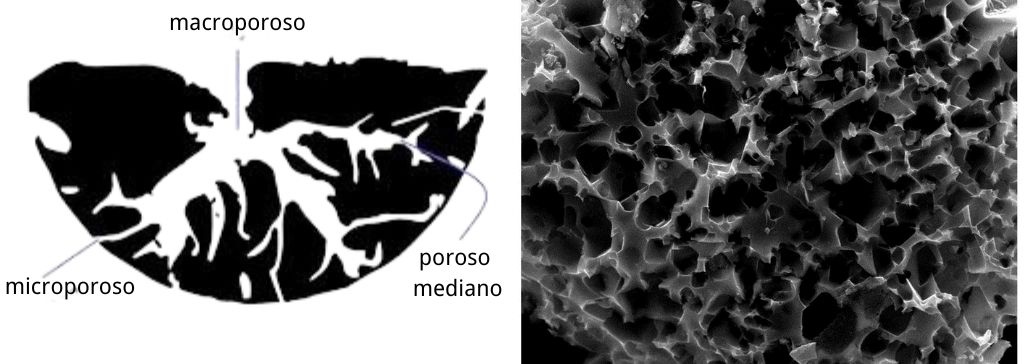Activated carbon is a porous solid material used in a wide range of applications in many fields, one of the most important applications being adsorption. Thanks to its rich microporous and mesoporous structure, activated carbon is able to effectively adsorb organic, inorganic and other impurities in gases, liquids or solutions.

Two Main Activated Carbon Adsorption Mechanisms
Chemical adsorption
Chemisorption occurs when atoms or groups of a molecule chemically react with functional groups on the surface of the activated carbon to form chemical or ionic bonds. Compared to physical adsorption, chemisorption is an irreversible process. In this process, the functional groups on the surface of the activated carbon act as catalysts for the chemical reaction. Chemisorption usually occurs on large molecules and organic substances of high molecular weight.
Physical adsorption
Physical adsorption occurs when molecules of a gas or solution interact with the surface of the activated carbon by physical forces to form molecule-surface adsorption forces. This adsorption is usually reversible and is affected by factors such as temperature, pressure and intermolecular interaction forces. Physical adsorption occurs mainly on small molecules and low molecular weight substances.
Activated Carbon Adsorption Capacity Sources
- Large surface area and pore volumeThe microporous and mesoporous structure of activated carbon provides a huge surface area and pore volume, which provides a large number of adsorption sites for the adsorption process. For example, the coconut shell activated carbon has well-developed micropores and a high specific surface area, which gives it a high adsorption capacity.
- Active sites: There are several active sites on the surface of the activated carbon, such as redox sites, acid-base sites, etc. These sites can provide additional adsorption capacity.
Factors Affecting Activated Carbon Adsorption Performance
The adsorption performance of activated carbon is closely related to several factors, including:
- Pore structure characteristics
- Surface chemistry
- Raw material selection
- Preparation process
By regulating these factors, activated carbon materials with different adsorption capacities and selectivity can be obtained to meet the needs of various applications.
Request for Quotation
Are you looking for a high quality and reasonably priced activated carbon product solution? Don't hesitate any longer! Contact us now for a customized quote.
